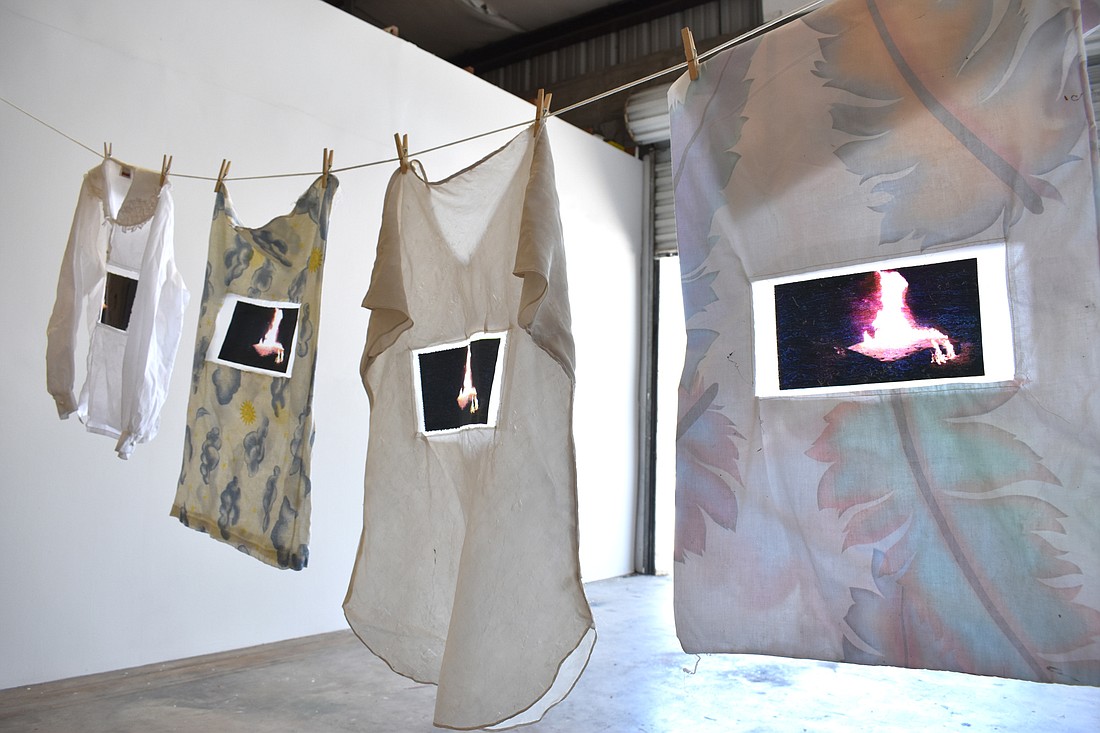- November 19, 2025
-
-
Loading

Loading

One week it’s a pink room filled with dismembered furniture and another, it’s a gallery featuring everything from feminist film to a sex education book for children.
M. Chapel Projects doesn’t have much in common with other Sarasota galleries. Its location, for instance, is on Princeton Street off of U.S. 301, tucked back in an unsuspecting industrial area.
Visual artist Marianne Chapel held a solo show in the space in March 2017 to test out the level of public interest. It was high, so the Ringling College professor held her official opening show in November. Since then, she has had six shows in what she calls her experimental art space, which doubles as her personal studio and exhibition hall.
“Galleries are usually big on sales and artwork that is a little easier for people to understand,” she says. “I wanted to show work that I’m often attracted to, which isn’t always sellable.”
Chapel says she isn’t concerned about turning a profit. She cares about exhibiting a mix of her own work and that of others who speak to her passion for social issues.
“The artist has so much more freedom than if there was a board, or a privately run gallery with a traditional owner,” she says. “I can show whatever I want, even if it might not be that marketable.”
Currently, the gallery is home to two simultaneous exhibitions: “Evolving/Revolving,” showing the work of California-based artist Elizabeth Sher, and “Making Place,” a group pop-up exhibition of pieces by West Coast and Central Florida-based artists that was curated by Sarah Viviana Valdez.
Valdez, who is also the exhibitions and marketing coordinator at Art Center Sarasota, met Chapel on what she calls the DIY exhibit scene. The two share a passion for art that explores social issues and pushes for inclusivity, so they decided to collaborate.
The result is two diverse exhibits rooted in the shared theme of art as a tool for healing. In “Making Place,” Valdez included pieces from artists Kieran Castaño, Jesica Glas, Erin Hart, Ava Zelkowitz and Andrea Soldner that dive into the topic of self-care. Through this exhibit, she hopes to bring sympathetic understanding.
“We don’t always think about why the artist is making the work they’re making,” Valdez says. “Even though a lot of the work is conceptually heavy and strong in that sense, they’re also reflections of the artist themselves.”
Indeed, the topics and imagery of both shows are heavy. Kieran Castaño, an Orlando artist who identifies as transgender, will exhibit work that reflects his experience in the LGBTQ community. His painting “Que Ves cuando miras en el espejo?” (“What is it That You See in the Mirror?”) shows a naked individual with male genitalia gazing into the mirror, where the reflection reveals an individual with female anatomy looking back.
In “Evolving/Revolving,” Sher’s “Pandora’s Recipe Box” also pushes boundaries by using nude imagery from “It’s Perfectly Normal,” a book that teaches young children about sex.
It’s these raw, no-holds-barred pieces exploring topics like gender politics and sexual health that Chapel and Valdez think Sarasotans need to see.
Chapel says most people the gallery has attracted have been other artists or friends and family of exhibiting artists, but she hopes to expand her reach to more nonartists in the community.
“I just want a diverse crowd ... and a place where people can question and experience art in a different way,” she says.
Valdez thinks that can happen by connecting local artists, galleries and art organizations.
“Art communities aren’t private entities,” she says. “The whole point is to be a web and to help each other out.”
Correction: In the print version of this story published April 19, 2018, the title of Kieran Castaño's painting was misspelled.